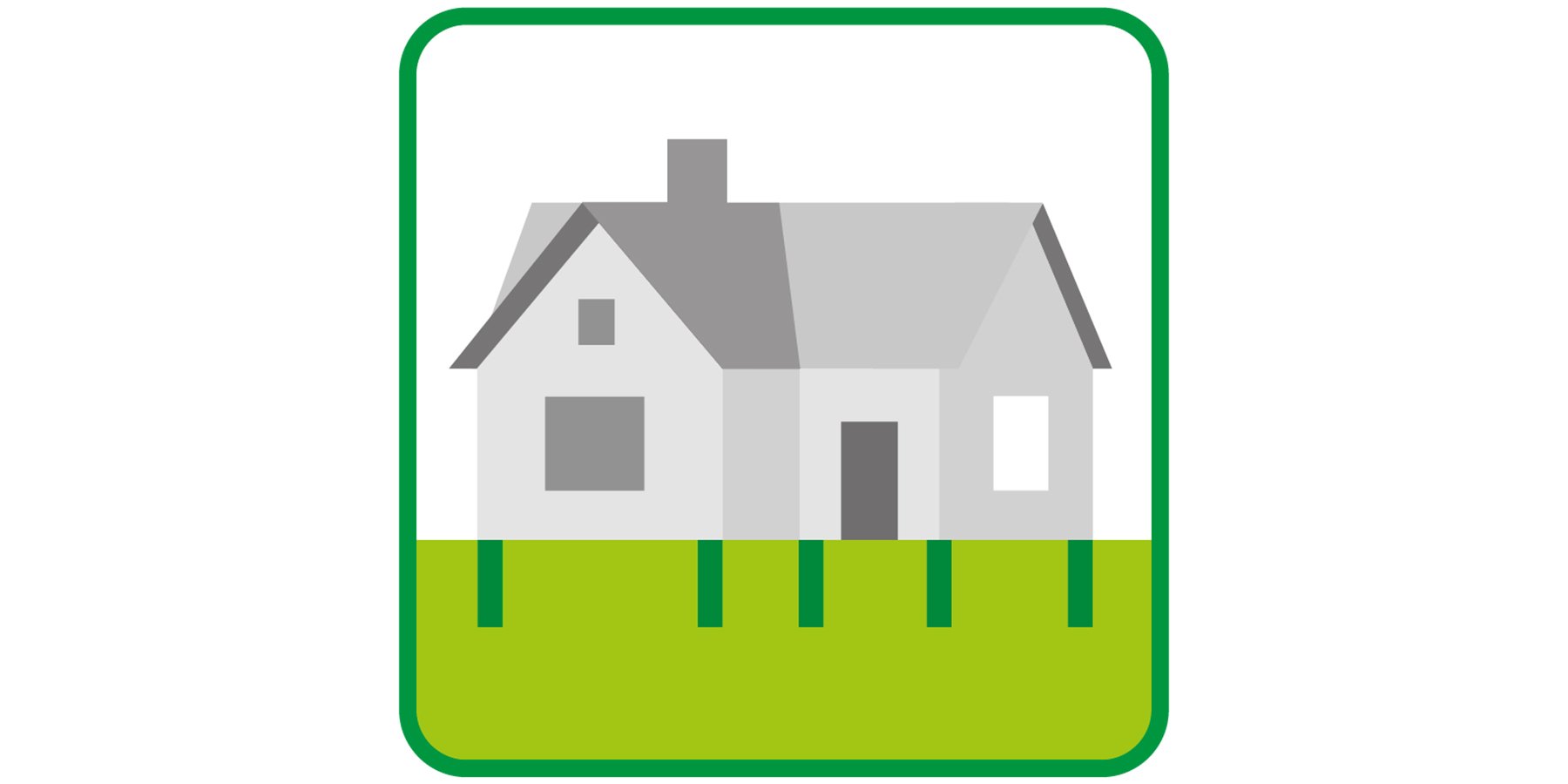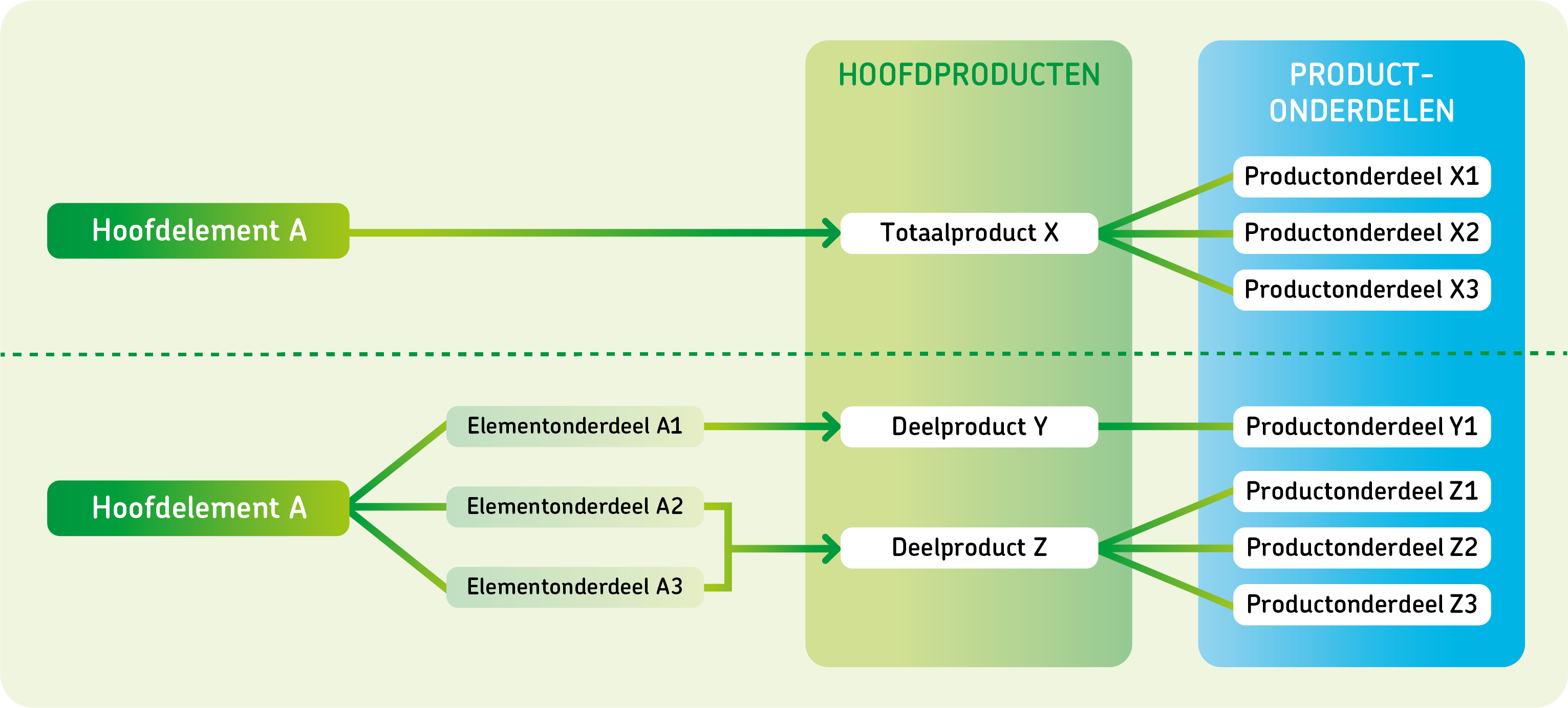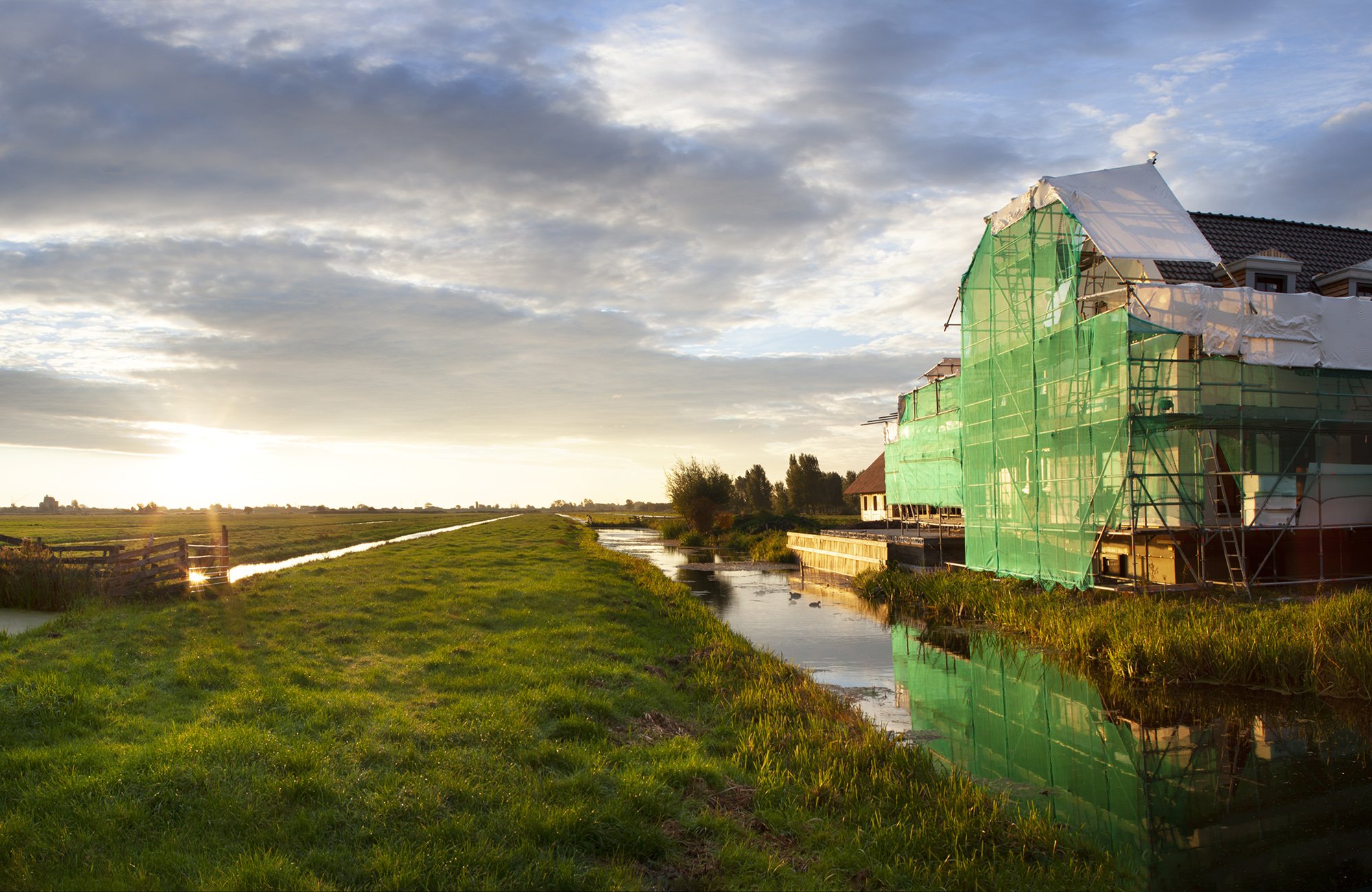Functional descriptions
The National Environmental Database (NMD) contains a wealth of environmental data on construction products and building installations, known as products. The data structure follows the well-known NL-SfB system and the RAW system for products that apply respectively within Civil and Utilities Construction (C&U) and the civil engineering sector. The data structure is similar to a tree, which ensures that the distinction between total products, partial products and product components is always clearly defined. You can use the database structure to decide whether your product should be included in the NMD.

Main elements and element components
The new data structure is based on the functions to be delivered by a civil engineering structure. All mandatory and optional functions are described in functional descriptions and divided into so-called main elements, named in accordance with NL-SfB and RAW. Examples of main elements include ‘Floors; structural’ (m2) and ‘Stairways; stairs’ (items). For each main element, the functions are broken down into so-called element components, such as ‘Anchorages’ (items), ‘Peripheral connection facilities’ (m) and ‘Handrails and balustrades’ (m) as part of the main element ‘Stairways; stairs’. The element components also contain so-called ‘functional descriptions’ which, in contrast to the main elements and element components, do not correspond with the 6-figure NL-SfB coding. A product covers an element or element component when it is apparent from the Life Cycle Assessment (LCA) that the product or product components fulfil the functions of the element or element component.
Total products and partial products
Some products in the NMD fulfil all described mandatory functions through the various element components of a main element. These products are known as total products. However, most products fulfil only the function(s) of a number of mandatory element components. These products are known as partial products. The difference between a total and partial product is, therefore, that multiple partial products are needed to cover a main element, while a total product covers all the mandatory functions of the element in one go. The image below presents this schematically.

Product components
Both total and partial products comprise product components. The LCA report of a total product must clearly describe how all product components fulfil the functions of the main element as they are not entered separately in the database input module, nor are they named separately when calculating a civil engineering structure using an instrument owner’s calculation tool.
When entering a partial product in the database input module, the product components are entered per element component for the function they cover. In some cases, for example with product components that have clear functional or technical differences and certainly when these also differ in scale, service life and/or units, an extra product component should be added to an element component, as these jointly cover the element component in question. An example is the product component ‘Pile’, which comprises the components ‘concrete’ and ‘reinforcement’ and covers the element component ‘Pile’ of the main element ‘Pile foundations; driven’.
‘Free-riders’
A product component may also cover multiple element components even though the LCA practitioner does not enter a separate calculation for each product component. This is because the environmental values of components that are not calculated separately are included in the environmental values of one of the other product components that have been calculated. ‘Free-riders’ are element components that are covered by a product component but do not contain any calculable environmental values themselves.
Frequently asked questions about the Database
Stichting NMD manages both the National Environmental Database (NMD) as well as the NMD Process Database. The NMD is a database filled with environmental declarations. This is the database that is used by the calculation tools to produce ECI and EPD calculations. The NMD Process Database is used as source (to draw up LCAs) for the data included in the environmental declarations in the NMD.
The environmental declarations and basic profiles should be reviewed for timeliness from time to time and then updated as necessary. The same shelf life applies to both with a periodic expiration date of 5 years. After this period, environmental declarations and basic profiles must be updated. This can also be done in the interim, for example after changes in the production process that affect environmental performance. Data owners can have their data changed by submitting a new template.
A background process is a process that affects a producer's or supplier's product, but over which the producer or supplier has no direct influence and which occurs elsewhere in the chain; for example, production of electricity or a raw material.
Subscribe to our Newsletter
Sign up now and receive our newsletter (in Dutch) 10 times a year!

